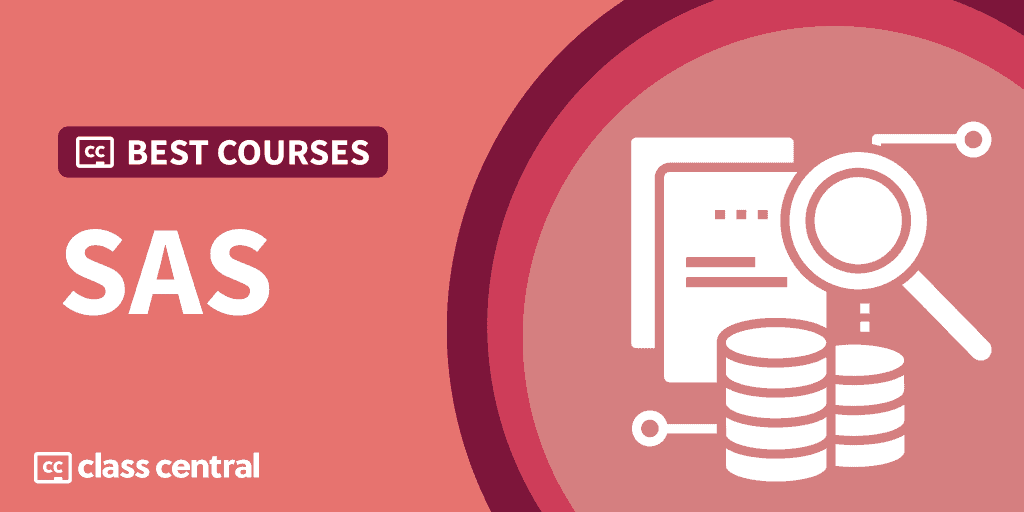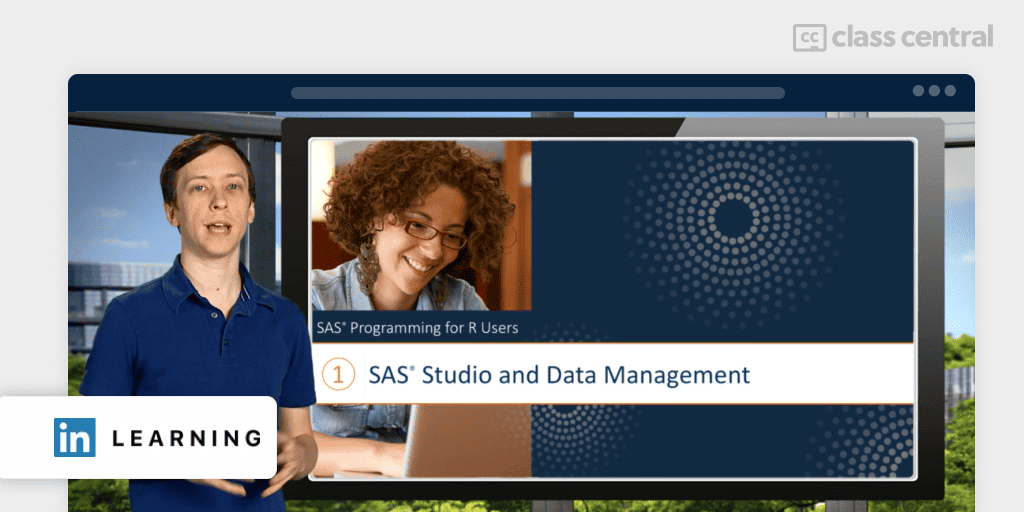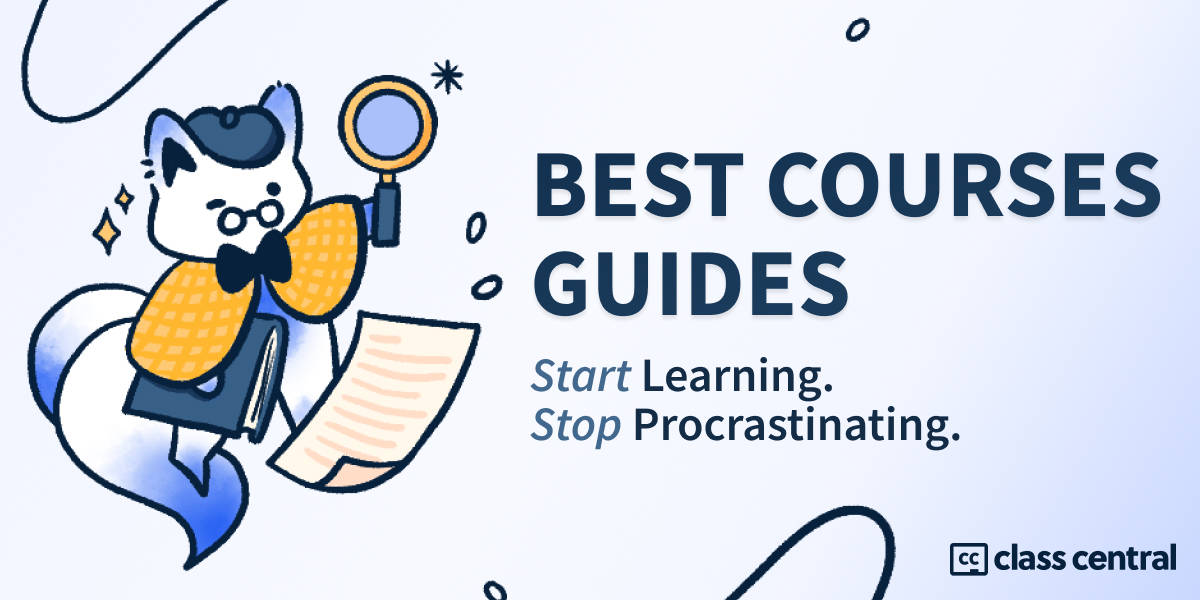7 Best SAS Courses for 2025: Robust Data Analytics
Master the data analytics powerhouse and propel your career with these top SAS courses.

The acronym for Statistical Analysis System, SAS, is a time-honored pillar of data analysis software, trusted and used by professionals worldwide. Even with the emergence of popular tools and programming languages for data analytics such as Python’s libraries (Pandas, NumPy, SciPy, etc.), R, and Julia, SAS remains a potent force in the business analytics landscape.
SAS is renowned for its robust data management capabilities, advanced analytics suite, and widespread industry use, especially in healthcare and finance. While newer tools offer flexibility and a modern approach, SAS’s reliability, extensive documentation, and superior customer support make it a preferred choice for many organizations.
If you’re an absolute beginner seeking to break into the data science field or a seasoned professional looking to expand your skill set, I’ve curated a comprehensive list of both free and paid SAS courses in this Best Courses Guide (BCG). By enrolling in these courses, you’ll gain the knowledge and tools to extract valuable insights from your data using SAS.
Click on the shortcuts for more details:
- Top Picks
- What is SAS?
- Courses Overview
- Why You Should Trust Us
- How We Made Our Picks and Tested Them
Here are our top picks
Click to skip to the course details:
| Course Highlight | Workload |
| Best Course for SAS® Base Programming Certification (SAS) | 50–100 hours |
| Best Short Basics of SAS Programming in Less Than 2 Hours (Angelica Spratley) | 1–2 hours |
| Most Fun Way Test Your SAS Skills (Sasensei) | N/A |
| Best SAS Programming for R Users (Jordan Bakerman) | 7–14 hours |
| Best Jargon-Free SAS Programming Course (SASCrunch.com) | 20 hours |
| Best YouTube SAS Tutorial (Learnerea) | 11–12 hours |
| Best Udemy SAS Certification Exam Prep (Aslam Khan) | 12–13 hours |
What is SAS?
SAS, short for “Statistical Analysis System”, is a statistical software suite that’s like the Swiss Army Knife of data analysis.
Born in the 1970s at North Carolina State University, SAS has evolved and adapted to the changing technological landscape over its 5 decades of history. Today, it is a multifaceted software suite that allows users to perform an impressive array of tasks: data management, advanced analytics, multivariate analysis, business intelligence, and predictive modeling, to name a few.
From statisticians to data scientists, and from finance professionals to healthcare analysts, SAS users span a broad spectrum. These professionals all have one thing in common: a need to derive meaningful insights from raw, sometimes unwieldy, data. Predicting credit card fraud? Identifying and retaining high-value customers? Optimizing supply chain operations? Or even preventing fires and saving lives? SAS can do it all.
There’s a lot of statistical analysis tools out there that are much more popular than SAS, like Python’s NumPy/Pandas stack or R’s RStudio. So what makes SAS stand out over its competitors?
Well first of all, SAS is a mature and robust tool. Companies with a long history behind them tend to favor tools with a proven track record of stability, as opposed to newer trendy tools that have a lot cooler features, yes, but are more prone to frequent changes and bugs. That’s the reason why SAS has hugged the top spot in the Magic Quadrant for Data Quality Solutions for over 16 years in a row!
And as SAS takes the security of its tools very seriously, providing extensive documentation to assist data analysts in their work, it should come as no surprise that a staggering 90% of Fortune 100 companies or their affiliates choose to be SAS customers. With more than 70,000 organizations around the world using SAS to extract valuable insights from their data, getting a cushy stable job as a data analyst at a well-established company is not far from reach. In fact, SAS’s user-friendly interface and language’s similarity to SQL make it an accessible tool for beginners while remaining a powerful tool for seasoned professionals.
Courses Overview
- All of these courses except two are free or free-to-audit
- Most of these courses use SAS OnDemand for Academics Edition, which is free for educational use.
Best Course for SAS® Base Programming Certification (SAS)
My personal favorite SAS Programming course is the SAS® Programming: Essentials training curriculum, designed by the company behind SAS itself. The curriculum prepares learners for the highly-accredited SAS Certified Specialist: Base Programming Using SAS 9.4 exam, which tests your ability to create data structures, manage data, handle errors, and generate reports.
Altogether, once you’ve finished the curriculum, you’ll have a comprehensive understanding of SAS programming, empowering you to manipulate, analyze, and present data effectively.
The curriculum is quite popular, and can be taken on the company’s support training website (first part free, second part paid), on Coursera (all courses free-to-audit, paid Coursera Professional certificate), or on LinkedIn Learning (paid subscription and LinkedIn Learning certificate).
As for which provider platform you can choose from:
- SAS’s support training website: If your employer is paying for the courses and the Base Programmer certification. Can be taken on-demand or live. Includes practice exam, prep guide, exam voucher, and additionally, access to SAS Virtual Lab
- Coursera: If you want to audit the whole course for free without certification or want to take the same courses for significantly cheaper. Includes additional practice exercises and discussion prompts. You’ll need to set up the exercises by yourself using SAS OnDemand for Academics or any owned SAS software
- LinkedIn Learning: If you already have a LinkedIn Learning subscription. You’ll need to set up the exercises by yourself using SAS OnDemand for Academics or any owned SAS software.
All of these courses heavily focus on teaching you how to code, and thus many coding exercises (along with MCQ questions) are provided.
In SAS Programming 1: Essentials, you will:
- Use SAS programming tools and understand SAS syntax
- Access and validate messy, real-world data
- Preparing data for analysis by subsetting rows and computing new columns
- Analyze and report data to deliver business insights
- Export data and results
- Use SQL to query and join tables.
Building on this, in SAS Programming 2: Essentials, you will:
- Understand and control DATA step processing
- Create an accumulating column and process data in groups
- Manipulate data with functions
- Convert column types
- Create custom formats
- Concatenate and merge tables
- Process repetitive code
- Restructure tables.
| Institution | SAS |
| Provider | Coursera / LinkedIn Learning / SAS |
| Instructors | Stacey Syphus and Peter Styladis |
| Level | Beginners |
| Workload | 50–100 hours |
| Enrollments | 36K |
| Rating | 4.8 / 5.0 (2.9K reviews) |
| Certificate | Paid / Free (SAS Programming 1) |
Best Short Basics of SAS Programming in Less Than 2 Hours (Angelica Spratley)
Angelica Spratley is a Data Science Teacher and SAS Foundation Instructor. In this free 2-hours long course, she teaches beginners the fundamentals of SAS. By the end of this course, you’ll have a solid foundation in SAS programming in a very short time.
What you’ll learn:
- Understanding SAS syntax, including data and proc steps
- Creating and importing datasets, and handling missing or corrupted data
- Recognizing special characters not read by SAS
- Using if-then statements and functions for data manipulation and transformation
- Applying procedures to obtain summary statistics including means and frequencies.
| Channel | Learning with Jelly |
| Provider | YouTube |
| Instructor | Angelica Spratley |
| Level | Beginner |
| Workload | 1–2 hours |
| Views | 108K |
| Likes | 2.3K |
| Certificate | None |
Most Fun Way Test Your SAS Skills (Sasensei)
Learning by doing is the best way to learn. And what’s better than learning by doing? Learning by having fun, of course!
Sasensei is a free-to-sign-up online learning platform to help you master SAS. It does this by testing you on all sorts of SAS topics, including statements, macro, procedures, options, etc, through flashcards and quizzes.
Just as with websites such as LeetCode, HackerRank, or CodeWars, Sasensei provides a gamified learning experience through the existence of a leaderboard system, where you start as a White Belt and rise through the ranks to higher levels like Yellow Belt, Green Belt, Black Belt, Sasamurai, Assassin, and finally, Sasensei. You earn points by performing well in quizzes, answering questions correctly, and also by helping others learn by submitting well-written questions and answers to the question bank.
You can also compete with fellow rank-mates by hosting public or private quizzes, which can also be taken either individually or in a group, similar to Kahoot.
| Provider | Sasensei |
| Level | All levels |
| Workload | N/A |
| Certificate | None |
Best SAS Programming for R Users (Jordan Bakerman)
SAS® Programming for R Users is, as the name suggests, a course for those who are proficient with the R programming language. Thus, the course assumes that you have prior experience with programming, this course uses a cookbook-style approach which takes common R tasks and teaches you how to accomplish the same tasks using SAS syntax. Expect this course to take less than a day to complete.
Starting with the basics, you’ll figure out the syntax required to import data, alter it to meet your specifications, and learn about the data from summary statistics and graphics. You’ll then customize output analyses with the SAS macro programming language, discuss the syntax that is required to create a variety of linear models, and work in the interactive matrix language.
Just like the first course in this guide, there are two ways you can take this course:
- SAS’s support training website (free): If you want a free certificate from SAS
- LinkedIn Learning (requires subscription): If you already have a LinkedIn Learning subscription and want a LinkedIn Learning certificate.
If you’re interested in the course syllabus, this course is structured into several sections:
- Introduction: Familiarizing yourself with SAS programming and accessing data in SAS libraries
- Importing and Reporting Data: Learning the DATA step, manual data entry, importing data, reporting the data, and enhanced reporting.
- Creating New Variables, Functions, and Data Tables: Creating new variables, using functions, and subsetting and concatenating data tables
- Random Number Generation and Plotting: Learning the DO loop and random number generation, single-cell plotting, and multi-cell plotting
- Descriptive Procedures, Output Delivery System, and Macros: Exploring the CORR, FREQ, MEANS, and UNIVARIATE procedures, the Output Delivery System (ODS), creating macro variables, and creating macro programs
- Analyzing the Data via Inferential Procedures: Learning linear models, generalized linear models, mixed models, and other procedures
- Interactive Matrix Language (IML): Covering the basics of IML, modules and subroutines, calling SAS data sets and procedures, and simulations
- A Bridge between SAS and R: Calling R from IML, Base SAS Java API, and SAS Enterprise Miner.
| Provider | LinkedIn Learning |
| Instructor | Angelica Spratley |
| Level | Beginner |
| Workload | 7–14 hours |
| Enrollments | 46K |
| Rating | 4.7 / 4.0 (330 ratings) |
| Certificate | Free / Paid |
Best Jargon-Free SAS Programming Course (SASCrunch.com)
Part 1 of the SAS Programming Course for Absolute Beginners is a free 20-hours long coding-oriented course with no prior programming experience requirement whatsoever.
Through step-by-step guidance, you’ll learn SAS Functions, SAS Variables, Data Manipulation, Data Analysis, and Statistical Analysis. These essential skills will prepare you for the SAS Base Certification Exam and equip you to confidently tackle SAS-related job interviews.
What you’ll learn:
- Familiarization with SAS Studio interface and dataset creation
- Understanding and using SAS variables and functions
- Data manipulation techniques for cleaning and organizing data
- Performing simple to complex data analysis, including frequency, means, and normality tests
- Conducting statistical analysis such as one-sample tests, chi-square tests, correlation, and regression analysis.
| Provider | SASCrunch |
| Level | Beginner |
| Workload | 20 hours to complete |
| Rating | 4.8 / 5.0 (106 ratings) |
| Certificate | None |
Best YouTube SAS Tutorial (Learnerea)
Sometimes a lengthy hassle-free YouTube tutorial is all you need to learn how to use SAS. This 12 hours long course by Learnerea is a complete package for learning SAS Programming even if you do not have any technical background. However, no exercises are provided in this course.
In this comprehensive free SAS tutorial, you’ll start by getting familiar with the SAS University Edition interface. Then, you’ll delve into the core components of SAS, including Data Steps and Procedures, and learn about SAS’s different data types. Moving on, you’ll master the art of table creation, library creation, and importing files into SAS, and after that understand how to use variables and ‘if-then-else’ statements for complex data manipulation.
You’ll be introduced to various procedures — which is the heart of various data analyst methods — such as Proc Print, Proc Sort, Proc Frequency, Proc Transpose, and Proc Contents. You’ll also explore various functions to help you exercise text, numerical, and datetime data into the right format for analysis. Finally, you’ll learn various methods to combine tables in SAS, enhancing your ability to handle and manipulate large and complex data sets.
| Channel | Learnerea |
| Provider | YouTube |
| Level | Beginner |
| Workload | 11–12 hours |
| Enrollments | 174K |
| Rating | 2.7K |
| Certificate | None |
Best Udemy SAS Certification Exam Prep (Aslam Khan)
The Simplest Guide to SAS Programming- SAS Base-SAS Advanced is a beginner-friendly SAS programming course. Taught by Aslam Khan, this course is full of learning resources, including quizzes, coding examples, and even a book of the same name. By the end of this course, you’ll have the knowledge to tackle the following exams:
- SAS Certified Associate: Programming Fundamentals Using SAS 9.4
- SAS Certified Specialist: Base Programming Using SAS 9.4
- SAS Certified Professional: Advanced Programming Using SAS 9.4
- SAS Certified Clinical Trials Programmer Using SAS®9
One major thing I like about this course is that its syllabus is designed in a streamlined way, focusing on four main areas:
- Data preparation: Here, you’ll learn how to import data from multiple sources, create new variables, write SAS functions, and understand the mechanics of SAS datasets
- Data structuring: This part helps you level up your skills in transforming data. You’ll learn how to merge and join multiple datasets together, as well as sort (flip upside-down) and transpose (flip sideways) them
- Data visualization: This section propels you further into the realm of analytics. It empowers you to gain insightful inferences from your data
- Macro programming: The final section educates you on writing your code in a professional and elegant manner.
| Provider | Udemy |
| Instructor | Aslam Khan |
| Level | All levels |
| Workload | 12–13 hours |
| Enrollments | 14K |
| Rating | 4.7 / 5.0 (2.7K reviews) |
| Certificate | Paid |
Why You Should Trust Us
Class Central, a Tripadvisor for online education, has helped 60 million learners find their next course. We’ve been combing through online education for more than a decade to aggregate a catalog of 200,000 online courses and 200,000 reviews written by our users. And we’re online learners ourselves: combined, the Class Central team has completed over 400 online courses, including online degrees.
How We Made Our Picks and Tested Them
Trying to find “the best” can be daunting, even for those of us who live and breathe online courses. Here’s how I approached this task.
First, I combed through Class Central’s Catalog and the internet to find a variety of free and paid open courses, some with certificates. You don’t need to enroll in a university to learn about SAS.
When choosing courses, I considered the following factors:
- Renowned Institutions: I looked for recognized institutions in SAS
- Instructor experience: I sought instructors with extensive experience in SAS and engaging presentation styles
- Popularity: I checked numbers of enrollments and views to find popular courses
- Course content: I examined courses that covered a range of topics and presentation styles, including the basics and more advanced topics. I watched some course videos to sample courses I hadn’t already taken
- Learner reviews: I read learner reviews (when available) to get a sense of the quality of each course, leveraging the Class Central database with its thousands of course ratings and reviews written by our users as well as available course provider reviews.
Then, I defined the scope for these recommendations. A SAS course can cover various topics, so I chose top courses from a range of sub-fields.
Ultimately, I used a combination of data and my own judgment to make these picks. I’m confident these recommendations will be a reliable way to learn about SAS.
Fabio revised the research and the latest version of this article.

Elham Nazif
















